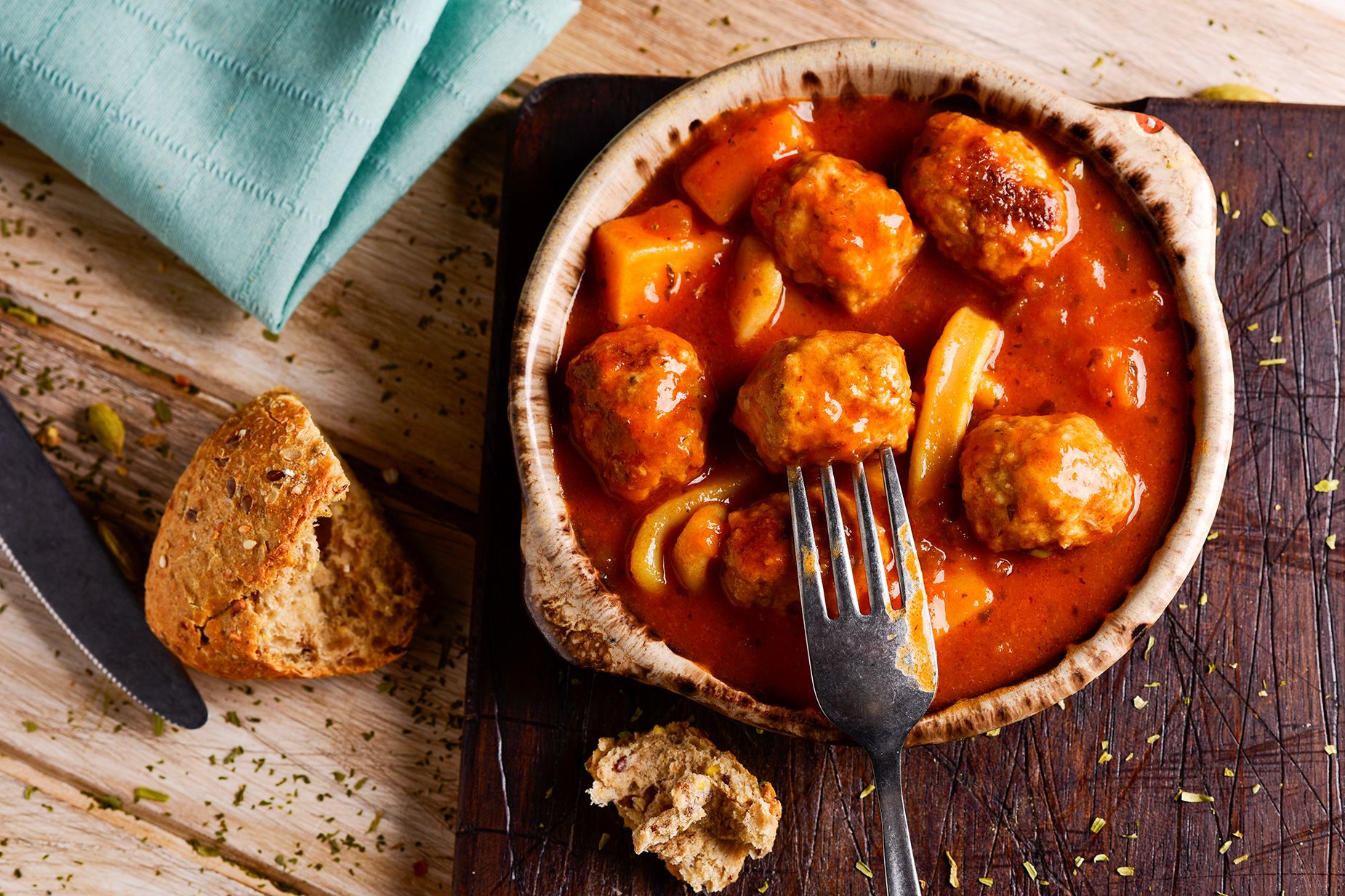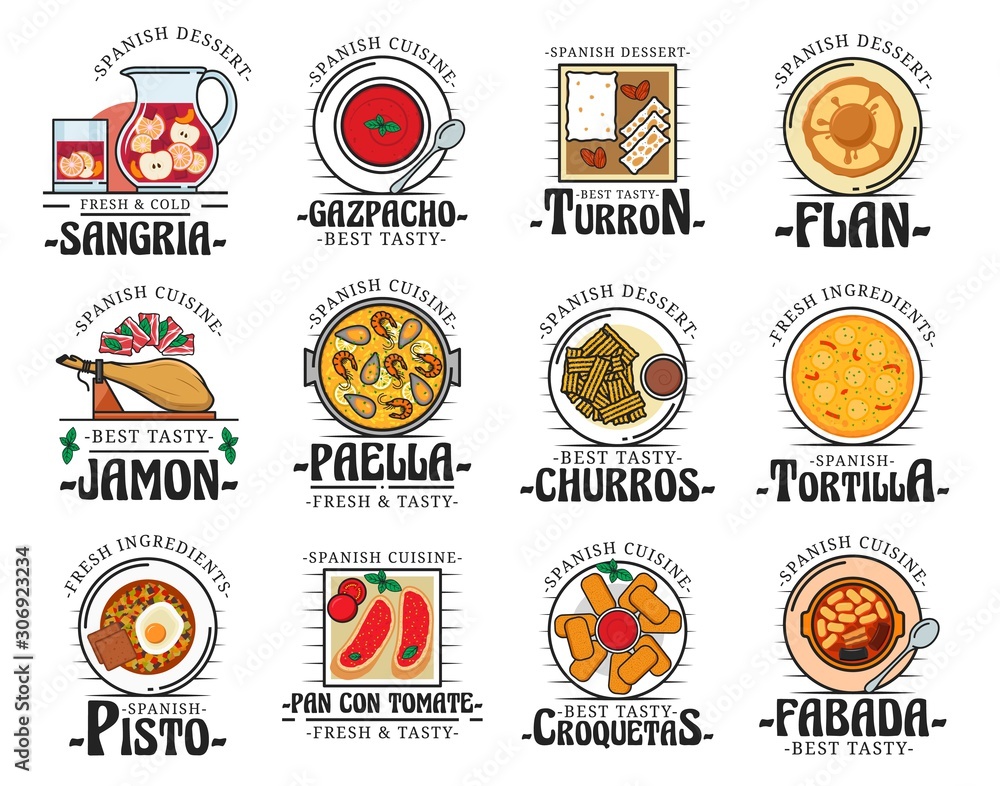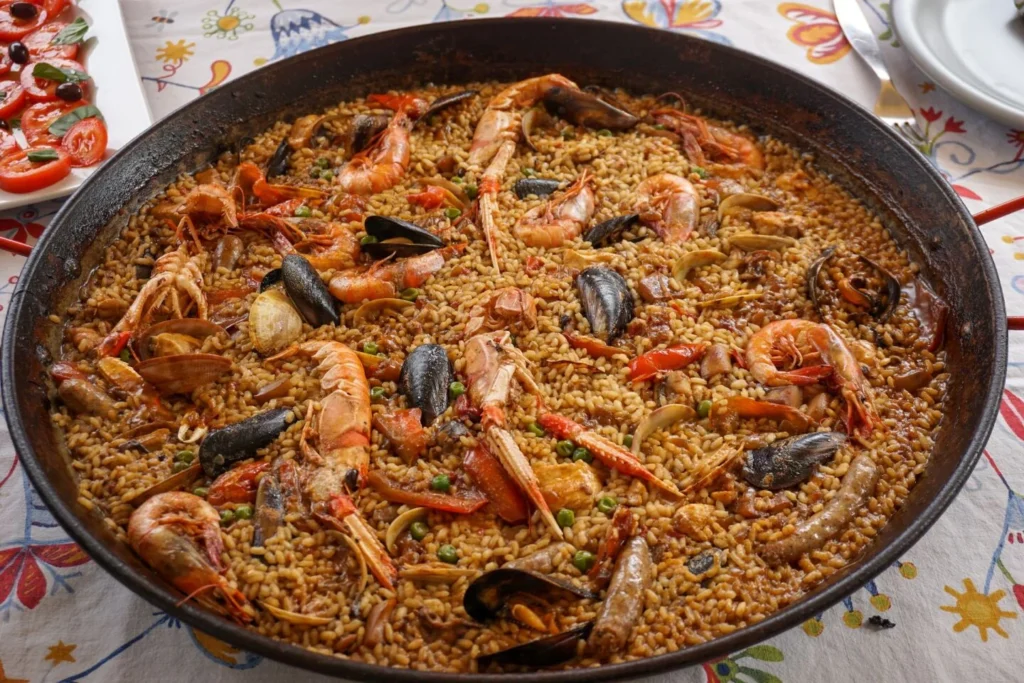Spain offers a rich culinary heritage. Traditional Spanish food is a delightful experience.
Spanish cuisine is diverse and full of flavor. It’s a blend of fresh ingredients and time-honored recipes. Each region boasts its own specialties, reflecting local culture and history. From the savory paella of Valencia to the sweet churros of Madrid, there’s something for every palate.
Traditional Spanish dishes often highlight seafood, meats, and vegetables, cooked with simple yet flavorful techniques. These meals are not just about taste but also about sharing and enjoying with family and friends. Whether you are a food enthusiast or just curious, exploring traditional Spanish food can be a delicious journey. Dive in and discover the heart and soul of Spain through its cuisine.
Introduction To Spanish Cuisine
Spanish cuisine is vibrant, diverse, and rich in flavor. It reflects Spain’s history and culture. Each dish tells a unique story. From the aromatic paella to the savory tapas, Spanish food delights all senses. The cuisine combines fresh ingredients, bold flavors, and traditional cooking methods. This creates unforgettable culinary experiences. Let’s dive into the cultural influences and regional variations of Spanish cuisine.
Cultural Influences
Spanish cuisine is shaped by many cultural influences. The Romans introduced olives and wine. The Moors brought rice, saffron, and almonds. These ingredients are now staples in Spanish dishes. The discovery of the Americas introduced new foods. Tomatoes, potatoes, and peppers became central to Spanish cooking. Each of these influences melded together to create the rich tapestry of Spanish cuisine.
Regional Variations
Spain’s diverse regions offer unique culinary traditions. Each region has its own specialties. Here’s a look at some standout regional dishes:
| Region | Signature Dish |
|---|---|
| Andalusia | Gazpacho |
| Valencia | Paella |
| Catalonia | Crema Catalana |
| Basque Country | Pintxos |
In Andalusia, gazpacho is a favorite. It’s a cold tomato soup, perfect for hot days. Valencia is famous for its paella. This rice dish often includes seafood or chicken. Catalonia offers the delightful crema catalana. It’s a custard dessert with a caramelized sugar top. The Basque Country is known for pintxos. These are small snacks, similar to tapas, often served on skewers.
Each region uses local ingredients and traditional recipes. This creates a diverse and exciting culinary landscape. Whether you prefer savory or sweet, there’s something for everyone in Spanish cuisine.
Tapas: Small Plates, Big Flavors
Tapas are a cherished part of Spanish cuisine. These small plates offer a big punch of flavor. They are perfect for sharing with friends and family. Each dish tells a story of Spain’s rich culinary heritage. From the bustling streets of Madrid to the coastal towns of Andalusia, tapas bring people together.
Popular Tapas Dishes
One famous tapa is patatas bravas. These are crispy potatoes served with a spicy tomato sauce. Another popular choice is albondigas. These are savory meatballs in a rich tomato sauce.
Gambas al ajillo is a must-try. This dish features shrimp cooked in garlic and olive oil. For cheese lovers, queso manchego is delightful. It is a sheep’s milk cheese with a nutty taste.
Don’t miss out on jamón ibérico. This cured ham is thinly sliced and full of flavor. Another classic is tortilla española. It is a thick omelet made with potatoes and onions.
Etiquette And Tradition
Tapas have a unique dining tradition. They are often enjoyed with drinks. People order a variety of dishes to share. This way, everyone gets to taste different flavors.
In Spain, eating tapas is a social event. Friends and family gather around the table. They chat, laugh, and enjoy the food. It’s about savoring the moment together.
There are some etiquette rules to follow. For example, use a small plate for each tapa. Don’t take more than you can eat. It’s polite to leave some for others. Also, remember to say “gracias” after being served.
Enjoying tapas is more than just eating. It’s an experience. It’s about connection, tradition, and delighting in the rich flavors of Spain.
Paella: The Heart Of Valencia
Valencia, a beautiful city on Spain’s eastern coast, boasts a culinary gem: paella. This iconic dish represents the essence of Spanish culture. It is a blend of flavors, history, and tradition. Paella is more than just food. It is a symbol of community and family gatherings.
Ingredients And Preparation
Paella’s main ingredient is rice. Valencia’s climate makes it perfect for growing high-quality rice. Saffron gives the dish its golden color and distinct aroma. Meat, seafood, or both can be added. Chicken and rabbit are common choices for a traditional Valencian paella.
The preparation starts with a wide, shallow pan. Olive oil is heated and used to sauté garlic, onions, and tomatoes. Meat or seafood is then added and cooked until browned. Rice is added, followed by saffron and broth. The mix is simmered until the rice absorbs the liquid and all flavors blend together.
Different Varieties
There are several types of paella. Each offers a unique taste experience. The traditional Valencian paella includes chicken, rabbit, and sometimes snails. Seafood paella features ingredients like shrimp, mussels, and squid. Mixed paella combines both meat and seafood for a hearty meal.
Vegetarian paella is also popular. It uses vegetables like artichokes, beans, and peppers. This variety caters to those who prefer a plant-based diet.
Each variety has its own charm. Whether you prefer meat, seafood, or vegetables, there is a paella for everyone. Every bite tells a story of Valencia’s rich culinary history.

Credit: www.cnn.com
Gazpacho And Salmorejo
Gazpacho and Salmorejo are two beloved traditional Spanish dishes. Both are cold soups, perfect for hot summer days. They share some ingredients but have distinct flavors and textures. Gazpacho is light and refreshing, while Salmorejo is thick and creamy.
Cold Soup Staples
Gazpacho is made from fresh tomatoes, cucumbers, peppers, onions, garlic, olive oil, and vinegar. These ingredients are blended to create a smooth, chilled soup. It is often garnished with chopped vegetables and croutons.
Salmorejo, on the other hand, is richer and denser. It uses tomatoes, bread, garlic, olive oil, and vinegar. The bread gives it a creamy texture. Salmorejo is typically topped with hard-boiled eggs and Spanish ham.
Health Benefits
Both Gazpacho and Salmorejo are packed with nutrients. Tomatoes, the main ingredient, are rich in vitamins A and C. They also contain antioxidants that help fight inflammation.
Olive oil, used in both soups, is a healthy fat. It promotes heart health and reduces bad cholesterol. Garlic, another common ingredient, has antibacterial properties and boosts the immune system.
Gazpacho’s vegetable mix provides fiber, which aids digestion. It is also low in calories, making it a great option for weight management.
Salmorejo’s bread content offers carbohydrates for energy. The toppings, like eggs and ham, add protein, making it a more filling meal. Both soups are hydrating, perfect for staying refreshed in warm weather.
Jamón Ibérico: A National Treasure
Spain is renowned for its rich culinary traditions. One of the most prized delights is Jamón Ibérico. This cured ham is a symbol of Spanish heritage. Its unique flavor and texture make it a true national treasure.
Curing Process
The curing process of Jamón Ibérico is an art. It begins with selecting the finest Iberian pigs. These pigs are fed a diet of acorns, giving the ham its distinct taste.
After slaughter, the legs are salted for two weeks. This helps to preserve the meat. Next, they are washed and hung to dry for about six weeks.
The final step is the curing phase. This can last from 12 to 36 months. The hams are stored in special cellars. Here, the temperature and humidity are controlled. This slow curing process develops the complex flavors.
Serving And Pairing
Serving Jamón Ibérico requires care. Use a sharp knife to cut thin slices. These slices should be almost transparent.
Jamón Ibérico pairs well with various foods. Here are some suggestions:
- Fresh bread
- Tomato and olive oil
- Cheese, especially Manchego
- Fruits like figs or melon
For beverages, consider these options:
- Red wine, particularly Rioja
- Sherry or Fino
- Light, crisp beer
These pairings enhance the rich taste of the ham. Enjoying Jamón Ibérico is a sensory experience. Each bite is a celebration of Spanish culture.

Credit: housinganywhere.com
Seafood Delights
Seafood Delights are a cornerstone of Traditional Spanish Food. The country’s extensive coastline and rich marine life contribute to a diverse array of seafood dishes. From the bustling markets of Galicia to the sun-drenched beaches of Andalusia, Spain offers an array of fresh, flavorful seafood options that tantalize the taste buds. Below, we delve into some of the most Popular Seafood Dishes and explore the Coastal Influences that shape these culinary delights.
Popular Seafood Dishes
Spain boasts a variety of popular seafood dishes, each with unique flavors and ingredients. Some must-try options include:
- Paella de Marisco: This iconic dish from Valencia features rice cooked with saffron, seafood, and a mix of vegetables. Common ingredients include shrimp, mussels, and squid.
- Pulpo a la Gallega: A traditional Galician dish, it involves boiled octopus seasoned with paprika, olive oil, and coarse salt. Often served on a wooden plate.
- Gambas al Ajillo: A simple yet flavorful dish of shrimp sautéed in garlic and olive oil, typically with a hint of chili pepper.
- Bacalao a la Vizcaína: A Basque Country specialty, this dish features salt cod in a rich tomato and red pepper sauce.
Coastal Influences
Spain’s diverse coastline significantly impacts its seafood cuisine. Each coastal region offers distinct flavors and preparations:
| Region | Influence |
|---|---|
| Galicia | Known for its rich fishing waters, Galicia offers fresh octopus, shellfish, and fish. The cuisine here often highlights the natural flavors of the sea. |
| Andalusia | This southern region is famous for its fried fish dishes, such as Pescaito Frito. The use of olive oil and a light batter keeps the fish crispy and flavorful. |
| Basque Country | Home to some of Spain’s finest seafood restaurants, the Basque Country features dishes with cod, hake, and squid. The emphasis is on quality ingredients and traditional methods. |
| Catalonia | Catalonia’s Mediterranean coast provides a bounty of seafood. Dishes like Suquet de Peix (fish stew) highlight the region’s culinary creativity and use of fresh seafood. |
Spanish Cheeses
Spain is famous for its diverse and delectable cheeses. Rich in history and flavor, these cheeses are a must-try for any food lover. Whether enjoyed alone or paired with wine, Spanish cheeses offer a unique culinary experience.
Famous Varieties
Spain boasts a variety of cheeses, each with its distinct taste and texture. Here are some of the most renowned:
- Manchego: This is perhaps the most famous Spanish cheese. Made from sheep’s milk, it has a nutty and tangy flavor.
- Idiazabal: A smoked cheese from the Basque Country. It has a sharp and slightly spicy taste.
- Queso de Cabra: Made from goat’s milk, it is creamy and slightly tart.
- Torta del Casar: A soft cheese from Extremadura, known for its rich and intense flavor.
Pairing With Wine
Pairing cheese with wine enhances the flavors of both. Here are some suggested pairings:
| Cheese | Wine |
|---|---|
| Manchego | Tempranillo |
| Idiazabal | Rioja |
| Queso de Cabra | Albariño |
| Torta del Casar | Sherry |
Each cheese and wine combination creates a unique taste experience. Enjoy discovering your favorite pairings.

Credit: stock.adobe.com
Sweet Endings
Spanish cuisine is famous for its rich flavors and vibrant colors. Sweet endings hold a special place in the culinary traditions of Spain. From creamy custards to festive treats, Spanish desserts are a delightful way to end a meal. Let’s dive into some traditional favorites.
Traditional Desserts
One popular dessert is Flan. This creamy caramel custard melts in your mouth. It has a smooth texture and a rich, sweet taste.
Churros are another favorite. These deep-fried dough sticks are crunchy on the outside and soft inside. Dip them in chocolate sauce for an extra treat.
Don’t forget Crema Catalana. Similar to French crème brûlée, it has a caramelized sugar top and a creamy vanilla base. The contrast of textures makes it irresistible.
Festive Sweets
During Christmas, Turrón is a must-have. This nougat treat comes in various flavors. Almond and honey are the most traditional.
On Three Kings’ Day, families enjoy Roscón de Reyes. This ring-shaped cake is decorated with candied fruits. It often hides a small toy or a bean inside. Finding the toy means good luck!
Easter brings Torrijas. This sweet treat is similar to French toast. Bread slices are soaked in milk, fried, and sprinkled with sugar and cinnamon. They are delicious and comforting.
Spanish sweet endings offer a rich variety of flavors and textures. Each dessert tells a story and celebrates tradition. Next time you enjoy a Spanish meal, save room for these delightful treats.
Frequently Asked Questions
What Is Traditional Spanish Food?
Traditional Spanish food includes dishes like paella, tapas, gazpacho, and tortilla española. These dishes are known for their rich flavors and use of fresh ingredients.
What Are Popular Spanish Tapas?
Popular Spanish tapas include patatas bravas, gambas al ajillo, and jamón ibérico. These small dishes are perfect for sharing.
What Ingredients Are Used In Paella?
Paella typically includes rice, saffron, seafood, chicken, and vegetables. The dish is cooked in a large, shallow pan.
How Is Gazpacho Made?
Gazpacho is made by blending tomatoes, cucumbers, bell peppers, garlic, and olive oil. It’s served chilled and is refreshing.
Conclusion
Traditional Spanish food offers a rich culinary experience. Each dish has a unique story. You can taste history in every bite. Enjoy the bold flavors and vibrant colors. Savor the blend of spices and fresh ingredients. These recipes bring people together.
They create lasting memories. Try cooking these dishes at home. Share them with friends and family. Experience the joy of Spanish cuisine. Explore new flavors and traditions. Spanish food is a true delight. Embrace the culture through its food. Enjoy every delicious moment.

